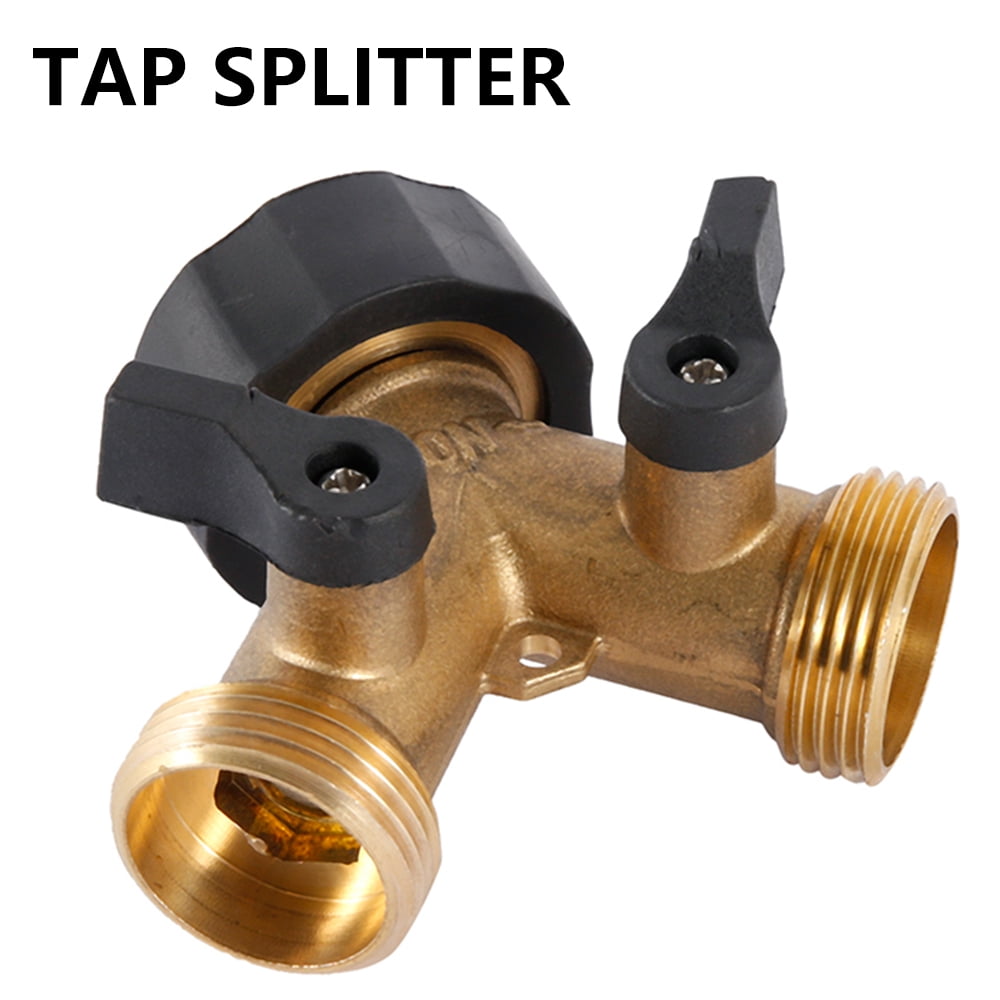


2-way Vs 4-way : The 2-way and the 4-way splitter are the most commonly available in the market.In this way, you’ll be able to figure out the ideal tool according to your needs. This is where we’ve got your back by creating a list of the ‘bests’.īut before jumping to the list, you should have a basic knowledge about the splitters. However, the only catch is to pick the quality product from a trusted brand which can be a sweat making process. These hose splitters generally last for a long period of time. Thus, meeting your water needs without much hassle and saving water too. This age long simple yet effective tool allows you to create separate water flows from the same source. However, the bill from the city to do so is probably going to be steep.A hose splitter is one of the important elements for your gardening needs. Going even larger would allow even more water.
MULTIPLE HOSE CONNECTOR FULL
You'd be able to supply them at full blast then. If you were to increase your supply line to 1", you'd have about 4x the area of the half inch piping going to the hoses. You would increase the amount a single hose can deliver exclusively, but you'll still be limited by what your city supply provides. Increasing all the lines to 3/4 will give you a very slight increase as you'll have reduced line losses, not enough to matter though. The pipe from the meter just can't provide enough water to keep all four hoses running at what you are used to as being full-blast. That is working OK, because 1/2 pipe is about half the area of a 3/4" pipe.īut if you double the amount of hoses you want to supply, you're now trying to provide double the amount of water per second. You have a 3/4" line coming into your house, feeding 2 1/2" hoses. The pipe coming into your house has resistance, much like in an electrical circuit, creating a maximum amount of water that can flow through it per second, and pretty much nothing downstream of that constriction can do anything but slow it down. The operating pressure from your city waterworks is essentially fixed. There is a saying in mechanical engineering: pressure makes flow. After you get that feeder pipe nice and fat, wait until your wife gets all warm and comfy in the shower with hair full of soap, quickly turn it on full blast. Nothing is impossible, but some things are costly.īe sure to up the size of the pipe between the meter and the splitter to 3/4 inch without restriction, or better yet, just step it up to 1 inch pex. But, if you wanna blow full blast out of multiple hoses, then you are going to have to step up to one inch all the way out to the curb and up-size your water meter too. The bigger you can make the main feeder pipe, the better. Using the new type-A pex or old fashioned copper will keep a 3/4 inch inside diameter the entire way, while the older type-B crimp connections use fittings that go on the inside the of the pipe and reduce the diameter. Yes, absolutely run a 3/4 inch line from the main and make sure there are no places where the line gets smaller. Under no condition, and in no way, are you going to get multiple hoses running at 'full pressure. In your opinion, would increasing to 3/4 inch PEX help solve the low pressure issue? Would it be sufficient to run two hoses at full pressure simultaneously? I would be able to run 3/4 inch PEX from the main lines to the hose bibs since they are located close to the 3/4 inch PEX main lines. Water pressure in my hoses was fine before adding the splitters, so I have a feeling the 1/2 inch PEX is not supplying enough water to keep pressure up in both hoses simultaneously. All fixtures and hose bibs are 1/2 inch PEX. At some point, it changes to 3/4 inch PEX B, which feeds into the main lines of the home and hot water tank. Main line coming into from the city is 3/4 inch copper. To give you a little context on my homes plumbing: I would sometimes need to run both my garage bib and outside bib at the same time, so there will potentially be 4 hoses running water simultaneously from 2 bibs. I recently added a garden hose splitter to my bib in my garage and outside, to be able to use 2 hoses at the same time from the same bib.


 0 kommentar(er)
0 kommentar(er)
